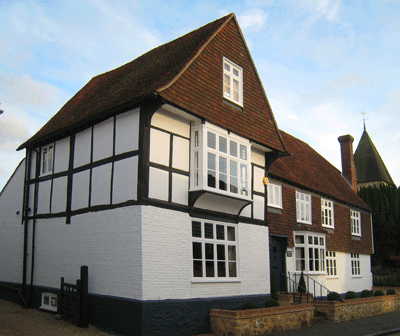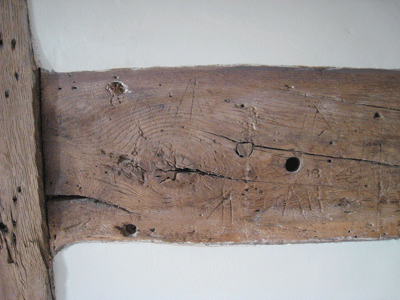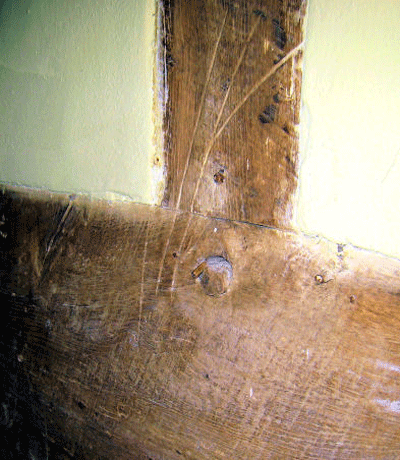The joy of owning a historic building
Blogs and articles about living in a period house often address the problems, and too often we forget the joys

The other day I was reading through my previous blogs and articles, and some by other building conservation specialists. It struck me that they pretty much all deal with technical or administrative details: thermal performance, embodied energy, breathability, damp, listed building consent, VAT - the list goes on.
While this is all vitally important stuff, it can tend to give the impression that owning a historic building is a chore - an endless progression from one problem to another, with a conservation officer or building conservation consultants always on the premises.
The reality is very different. To live in daily contact with part of our heritage is a rewarding and life enhancing experience. It is a joy and a privilege to touch, feel - even hear and smell, your own small piece of history, up close and personal. This, after all, is why so many of us do it. You even have the not inconsiderable pleasure of passers-by and visitors admiring your home. While you bask in the reflected glory, you realise that you are truly fortunate.

The concept of ownership is very different when your house is several centuries old. You are never far from the feeling that your occupation of the building is only a tiny link in a chain that stretches back through countless other "owners" and, we hope, forward through as many more. Unless you are very fortunate, you can never know anything about more than a handful of these others, but all will have left their mark somewhere. These layers of history add greatly to a sense of time and place.

The other people to have left their marks, literally all over your house, are the craftsmen who built it. From carefully shaped mouldings and chamfers to purely functional assembly marks and merely incidental signs of the use of a chisel, axe or saw - the evidence of their presence is everywhere. To see the work of the carpenter or mason in front of you and know that he stood on the same spot hundreds of years before, tools in hand, never ceases to be a special experience.

Living in an old house can be a constant voyage of discovery. The longer you live with a building, the more you understand it and appreciate its remarkable longevity; for it, you are no more than a brief visitor, a small part of a much bigger story.
For this reason I frequently advise clients to take their time in deciding how to live in their historic home. There is a natural tendency to want to shape your house to your will but often that risks diminishing what was so special about it in the first place. Over time the building will tend to show the way to go; work with it rather than against it. The result is always much more fulfilling; it is amazing how often the feature you thought would drive you mad turns out to be your favourite element of the house.
Sign up for the Country Life Newsletter
Exquisite houses, the beauty of Nature, and how to get the most from your life, straight to your inbox.
As a building conservation consultant, I inevitably find myself spending most of my time in houses with problems - generally caused by abuse or neglect in the recent past. These are the places that can make people think that owning a historic building is more trouble than it is worth. It is true that dealing with these problems can be difficult, time-consuming and expensive. It's not for everyone. But for many, the knowledge that they took charge of an important piece of the past which was in trouble and secured its future, passing it on in a healthier condition, brings a joy all of its own.
Alan Tierney is a historic building consultant. He runs Picketts Historic Building Conservation, advising clients on all aspects of the care, maintenance and alteration of historic buildings. This includes working with homeowners to improve energy performance by sustainable means, while protecting the integrity and value of our precious resource of old buildings.

This is an article from ProjectBook which provides a wide range of information for the conservation, restoration, care and repair of period and listed buildings. Picketts Conservation is a member of the Heritage Register which contains over 500 vetted craftsmen, contractors and consultants from all over the UK. Updated daily with new content, the website features the heritage register, a products directory, informative articles, current news, events and more. For more information, visit www.projectbook.co.uk.
Country Life is unlike any other magazine: the only glossy weekly on the newsstand and the only magazine that has been guest-edited by HRH The King not once, but twice. It is a celebration of modern rural life and all its diverse joys and pleasures — that was first published in Queen Victoria's Diamond Jubilee year. Our eclectic mixture of witty and informative content — from the most up-to-date property news and commentary and a coveted glimpse inside some of the UK's best houses and gardens, to gardening, the arts and interior design, written by experts in their field — still cannot be found in print or online, anywhere else.
-
 About time: The fastest and slowest moving housing markets revealed
About time: The fastest and slowest moving housing markets revealedNew research by Zoopla has shown where it's easy to sell and where it will take quite a while to find a buyer.
By Annabel Dixon Published
-
 Betty is the first dog to scale all of Scotland’s hundreds of mountains and hills
Betty is the first dog to scale all of Scotland’s hundreds of mountains and hillsFewer than 100 people have ever completed Betty's ‘full house’ of Scottish summits — and she was fuelled by more than 800 hard boiled eggs.
By Annunciata Elwes Published
